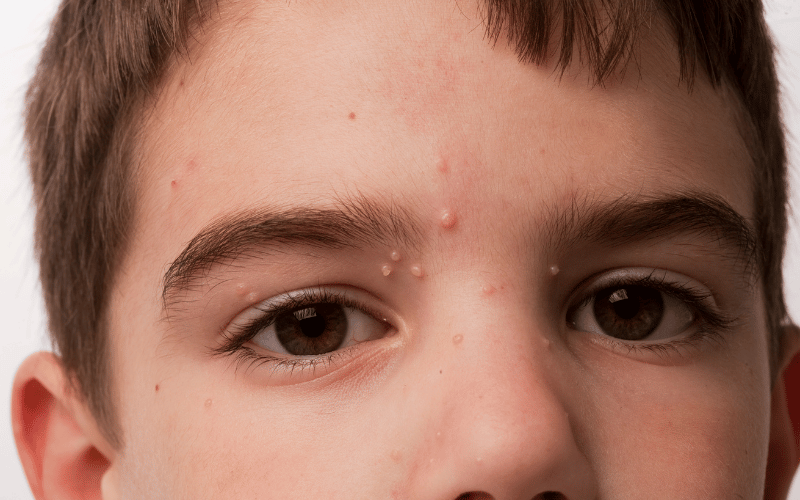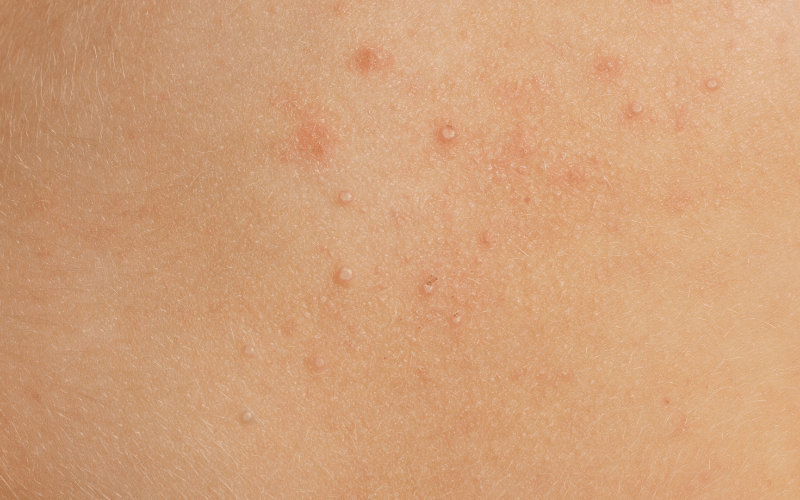Introduction: Discovering Molluscum Contagiosum’s Key Indicators
The realm of dermatology often feels like a vast ocean of terms, conditions, and symptoms. In that vastness, there’s one condition, perhaps not as notorious as acne or eczema, but just as puzzling: Molluscum Contagiosum. Commonly termed as MC or water warts, this skin condition is caused by a virus from the poxvirus family. While the name might sound intimidating, understanding its most prevalent symptoms can make the condition feel less mysterious and more manageable.

It’s not just about beauty or skin-deep looks; it’s about health. MC may be relatively harmless, but left unaddressed, it can lead to unnecessary discomfort or even secondary infections. That’s why recognizing the symptoms early can be your first line of defense. Not only does this proactive approach help in effective management, but it also reduces the spread, as MC is notably contagious.
But, what are these symptoms, and how can you spot them? From distinctive pimple-like centers to clusters of shiny bumps, the manifestations of MC are diverse. Each symptom has its own tale to tell, its own warning to give. The aim here? To equip you with the knowledge to identify these tales, these warnings, before they escalate.
In the forthcoming sections, we’ll be diving deep into each symptom, offering a comprehensive breakdown of its characteristics and implications. So, whether you’re a concerned individual or simply curious about skin health, this guide promises clarity and insights. Let’s embark on this enlightening journey together, decoding the skin’s messages and understanding what it tries to convey through the symptoms of Molluscum Contagiosum.
1. Flesh-Colored Bumps: Molluscum Contagiosum’s Telltale Mark

Among the myriad of skin abnormalities, molluscum contagiosum stands out with its distinctive flesh-colored bumps. These bumps, also known as papules, often resemble small pearls due to their waxy texture. Unlike typical pimples, they are smooth to the touch and have a dimple in the center.
The size of these papules usually ranges from 1mm to 5mm. While their appearance is often subtle, their clustering pattern gives them away. Individuals usually observe multiple bumps in a localized area, making it look like a constellation on the skin. An interesting aspect? These bumps can sometimes contain a white, waxy substance.
Their appearance may be confusing for many, as they may mimic other skin conditions like chickenpox or common warts. However, the distinguishing factor remains their central core. This core is a clear indication of molluscum contagiosum, setting it apart from other skin concerns.
One might wonder about the duration of these papules. They can persist for weeks to months and, in some cases, even last for over a year. While the virus’s self-limiting nature means it eventually fades, the bumps’ longevity often depends on individual immune responses.
It’s crucial to note that while these papules are benign, scratching or puncturing them can lead to secondary infections. Thus, understanding their nature and characteristics plays a pivotal role in managing the condition without exacerbating it. (1)